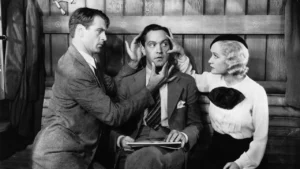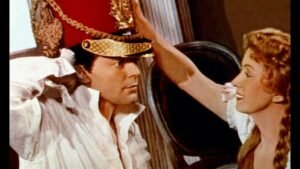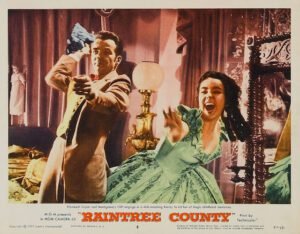Morocco: Marlene Dietrich’s Daring Hollywood Debut with Josef von Sternberg
Explore “Morocco” (1930), the iconic Josef von Sternberg film starring Marlene Dietrich and Gary Cooper. A daring Pre-Code Hollywood romance.

Morocco (1930) marked the first film collaboration between Marlene Dietrich and Josef von Sternberg in America, and their second overall after the success of The Blue Angel, released the same year. While perhaps not their absolute best work together, it holds significant historical importance that makes it well worth a watch for classic Hollywood enthusiasts.
Morocco was based on Benno Vigny’s 1927 novel, Amy Jolly, die Frau aus Marrakesch. During that period, there was a widespread fascination with stories set in the mysterious East and in countries whose cultures were largely unknown to the average American. Tales with this exotic emphasis boomed throughout the 1920s and 1930s.
The film tells the story of Amy Jolly (Marlene Dietrich), a woman with a shadowy past who arrives by ship in Morocco. Still on the vessel, she encounters a millionaire who immediately begins to court her. Deeply scarred by previous relationships (which are hinted at but not explicitly detailed in the story), she views any offer of help with suspicion.
Despite appearing to be a discreet and suffering woman, Amy Jolly maintains her star persona. This is, in fact, the very essence of the glamour Marlene Dietrich would embody throughout her career: perfect lighting, flawless makeup, an emphasized physique, and gowns designed by Travis Banton. This combination was, inevitably, a recipe for success. She could be miserable and in deep pain, but she would always be impeccably dressed, day or night. And that’s exactly what her audience wanted to see: a star. Speaking of Travis Banton, he was directly instrumental in creating her legendary style, a topic explored further in this article: Travis Banton, the Creator of Marlene Dietrich’s Style.
Upon arriving in the city, Amy begins performing in a cabaret, a venue that suggests a career nearing its end. Going to Morocco was akin to facing the end of the world, and many women who arrived there never returned. Amy Jolly perhaps desired this fate as she fled a painful situation.
At the cabaret, she meets the womanizing, slender, and captivating soldier Tom Brown (Gary Cooper). He is everything a woman trying to recover from a complicated love affair does not need. Will she go to great lengths to stay away from the soldier who is always surrounded by admiring women? Of course not! She is fatally attracted to the young man who has nothing to offer her.
Immature, Tom abandons her at the first opportunity. This is precisely what the smitten and somewhat unrealistic Monsieur La Bessière (Adolphe Menjou) had been hoping for. Menjou, true to form, masterfully plays a role representing a more affluent class.
It’s worth noting that the scene where Amy and Tom first meet ends up being one of cinema’s most iconic, even though the film’s pacing falters somewhat afterward. Here, we see Marlene singing in a tuxedo, openly flirting with everyone – men and women. The kiss she bestows upon a woman and the overall insinuation caused the stir that Morocco needed to gain widespread attention. This daring element was entirely Marlene’s idea. After this, her name was cemented, and she became one of the goddesses of Hollywood’s Golden Age.
As an interesting side note: Morocco was the only film for which Marlene Dietrich received an Academy Award nomination. She was nominated for Best Actress but never won an Oscar. In addition to Best Actress, Morocco also received nominations for Best Art Direction, Cinematography, and Director.



